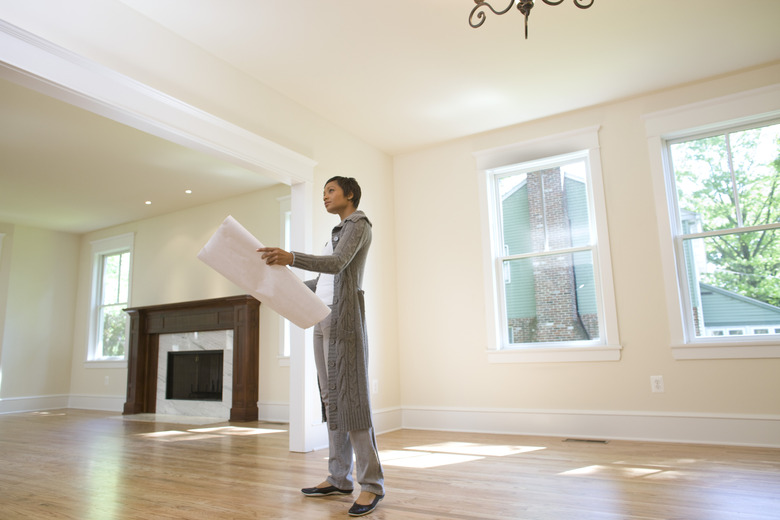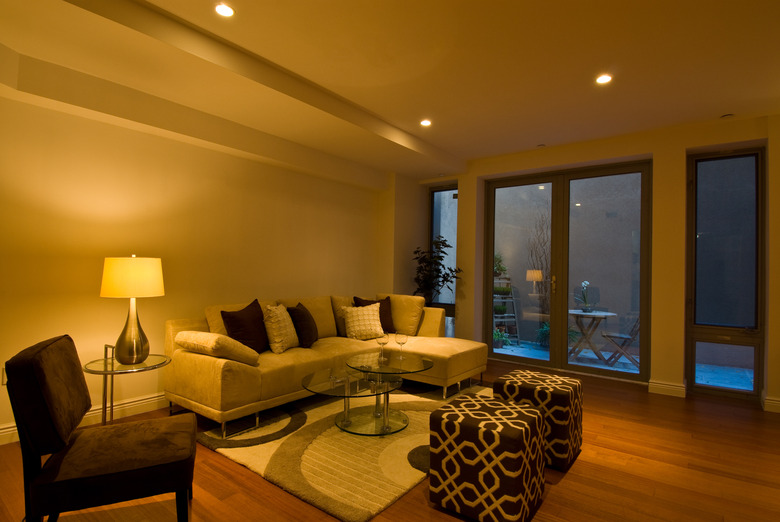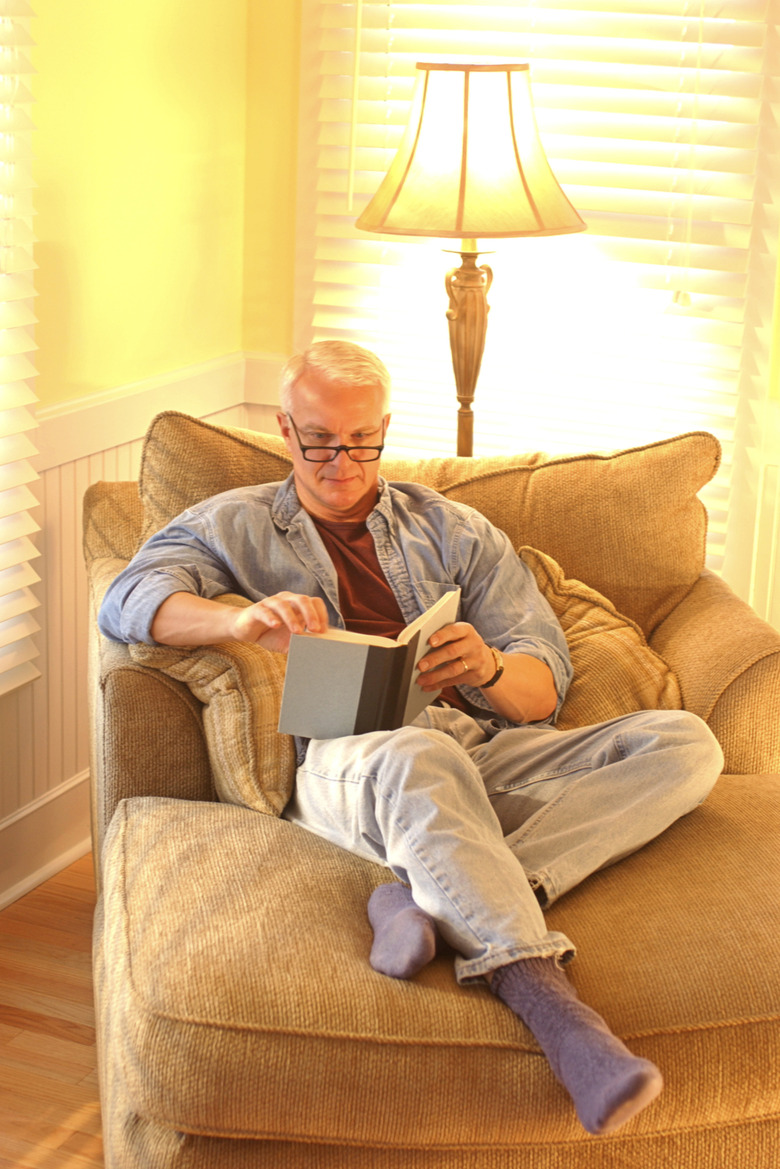How To Calculate How Much Light A Room Needs
Tip
It is better to provide an overabundance of lighting than to lack lighting. Lights can, after all, be turned off when not in use.
Forget footcandles or lux, which can be difficult to grasp or use. When determining the lighting needs in your rooms, there is a much simpler formula to use. While not as precise as mathematically engineered formulas, using the formula to translate lighting requirements into needed wattage is much simpler and something you can quickly apply to any lighting situation. With a few adjustments and considerations, it can work for any room in your house.
Step 1
Measure the length and width of the room. Divide unusually shaped rooms, such as L-shaped rooms, into two segments and measure each, since a single light is unlikely to adequately light the entire room.
Step 2
Multiply the width by the length for each room or room segment, if applicable. Multiply the result by 1.5 to determine the estimated watts to sufficiently light a room. For example, for a room 10 feet wide by 12 feet long, multiply 10 times 12 to get 120, then multiply by 1.5 to get 180 watts. Using this same formula, an L-shaped room with a 10-feet-wide by 8-feet-long section and a 10-feet-wide by 4-feet-long needs 120 watts in the first section and 60 watts in the other, for a total of 180 watts of light.
Step 3
Adjust the wattage levels upward for rooms as preferred. Areas where high-detail, task-specific work occurs or rooms in which elderly people reside, for example, require higher levels of light. Multiply the width by the length of the room and multiply the result by 2.5 to estimate higher light-level requirements. A room 10 feet wide by 12 feet long would need 300 watts under this formula.
Step 4
Disperse lighting wattage around the room to achieve both task lighting and ambient lighting as appropriate. A 10-by-12-foot room, for example, lit for average lighting — using the 1.5 multiplier — may divide the required 180 watts among a reading lamp of 60 watts and three track lights of 40 watts for ambient lighting. Adding a ceiling fan with another 60 watts ensures that you have more intense light should you need it, though you would be slightly shy of the 300 watt high-light figure.


